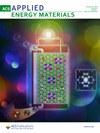Fokker–Planck equation and Feynman–Kac formula for multidimensional stochastic dynamical systems with Lévy noises and time-dependent coefficients
IF 5.4
3区 材料科学
Q2 CHEMISTRY, PHYSICAL
引用次数: 0
Abstract
The aim of this paper is to establish a version of the Feynman–Kac formula for the time-dependent multidimensional nonlocal Fokker–Planck equation corresponding to a class of time-dependent stochastic differential equations driven by multiplicative symmetric (or asymmetric) -stable Lévy noise. First the forward nonlocal Fokker–Planck equation is derived by the adjoint operator method, overcoming the challenges posed by time-dependent multidimensional nonlinear symmetric -stable Lévy noise. Subsequently, the Feynman–Kac formula for the forward multidimensional time-dependent nonlocal Fokker–Planck equation is established by applying techniques for the backward nonlocal Fokker–Planck equations, which is associated with the backward stochastic differential equation driven by the multiplicative symmetric -stable Lévy noise. Notably, in the case of asymmetric -stable Lévy noise case, the presence of the characteristic function in the nonlocal operator adds complexity to the analysis. Using the Feynman–Kac formula, it is demonstrated that the solution of the forward nonlocal Fokker–Planck equation can be readily simulated through Monte Carlo approximation, especially in scenarios involving long-time simulation settings with large steps. These concepts are illustrated with intriguing examples, and the dynamic evolution of the probability density function corresponding to the stochastic SIS model and the stochastic model for the MeKS network (reflecting the interactions among the MecA complex, ComK and ComS) are investigated over an extended period.
具有莱维噪声和时变系数的多维随机动力系统的福克-普朗克方程和费曼-卡克公式
本文的目的是为一类由乘法对称(或非对称)α-稳定莱维噪声驱动的时变随机微分方程建立一个费曼-卡克公式版本的时变多维非局部福克-普朗克方程。首先,通过邻接算子法推导出了前向非局部福克-普朗克方程,克服了与时间相关的多维非线性对称 α 稳定莱维噪声所带来的挑战。随后,通过应用后向非局部福克-普朗克方程的技术,建立了前向多维时变非局部福克-普朗克方程的费曼-卡克公式,该公式与乘法对称α稳定莱维噪声驱动的后向随机微分方程相关联。值得注意的是,在非对称 α 稳定莱维噪声情况下,非局部算子中特征函数的存在增加了分析的复杂性。利用费曼-卡克公式,可以证明前向非局部福克-普朗克方程的解可以很容易地通过蒙特卡罗近似来模拟,特别是在涉及大步长时模拟设置的情况下。通过有趣的例子说明了这些概念,并研究了与随机 SIS 模型和 MeKS 网络随机模型(反映 MecA 复合体、ComK 和 ComS 之间的相互作用)相对应的概率密度函数在较长时间内的动态演化。
本文章由计算机程序翻译,如有差异,请以英文原文为准。
求助全文
约1分钟内获得全文
求助全文
来源期刊

ACS Applied Energy Materials
Materials Science-Materials Chemistry
CiteScore
10.30
自引率
6.20%
发文量
1368
期刊介绍:
ACS Applied Energy Materials is an interdisciplinary journal publishing original research covering all aspects of materials, engineering, chemistry, physics and biology relevant to energy conversion and storage. The journal is devoted to reports of new and original experimental and theoretical research of an applied nature that integrate knowledge in the areas of materials, engineering, physics, bioscience, and chemistry into important energy applications.
 求助内容:
求助内容: 应助结果提醒方式:
应助结果提醒方式:


